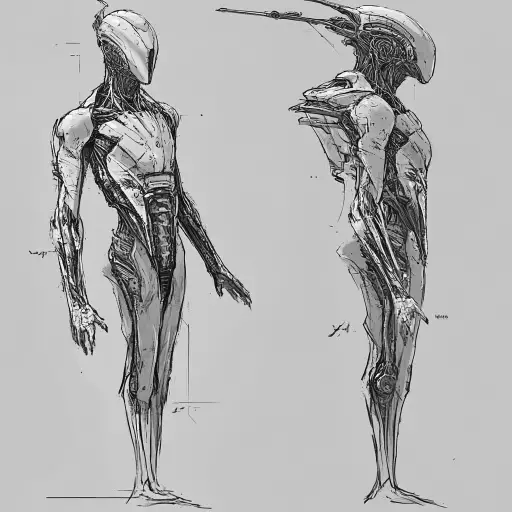Explore the Best AI Image Gallery

Beyond the Canvas: How AI-Powered Visual Experiences are Transforming Creativity
The realm of creativity is undergoing a seismic shift, propelled by the transformative power of artificial intelligence (AI). AI-powered visual experiences are no longer confined to the realm of science fiction; they are becoming increasingly integrated into our daily lives, reshaping how we create, consume, and interact with art and design.
The Rise of AI in Visual Creativity
Artificial intelligence is rapidly evolving, surpassing human capabilities in various domains, including visual arts. AI algorithms can now generate stunningly realistic images, videos, and animations, mimicking the styles of renowned artists or forging entirely new aesthetics. This opens up a world of possibilities for creators, allowing them to explore uncharted territories and push the boundaries of imagination.
Applications Across Creative Industries
- Art and Design: AI tools can assist artists in generating concept art, exploring different compositional layouts, and even creating entire artworks from scratch. This collaboration between human and machine fosters a new era of artistic expression.
- Film and Animation: AI is revolutionizing the animation process by automating tasks such as character rigging, motion capture, and background generation. This frees up animators to focus on more creative aspects, resulting in higher-quality productions with greater efficiency.
- Gaming: AI-powered game environments can generate dynamic and immersive worlds, adapting to player actions and creating truly unique experiences. NPCs (non-player characters) can exhibit realistic behavior, enhancing the sense of immersion and storytelling.
- Advertising and Marketing: AI algorithms can analyze consumer data to create targeted and personalized visual content that resonates with specific audiences. This allows for more effective advertising campaigns and a deeper understanding of consumer preferences.
Ethical Considerations in AI-Driven Creativity
The rise of AI in creative fields raises important ethical considerations that must be addressed:
- Authorship and Ownership: When an AI generates a work of art, who owns the copyright? Is it the creator of the AI algorithm, the user who inputs the parameters, or the AI itself? This legal and philosophical question requires careful consideration.
- Bias and Representation: AI algorithms are trained on vast datasets, which may contain inherent biases that reflect societal stereotypes. This can result in AI-generated content that perpetuates harmful representations and reinforces existing inequalities.
- Job Displacement: The automation capabilities of AI raise concerns about the potential displacement of human workers in creative industries. It is crucial to consider the impact on employment and develop strategies for retraining and upskilling the workforce.
Future Trends in AI-Powered Visual Experiences
The future of AI in visual creativity holds immense promise:
- Increased Personalization: AI will enable highly personalized visual experiences tailored to individual preferences, creating immersive and interactive environments that adapt to users needs.
- Enhanced Collaboration: AI tools will facilitate seamless collaboration between humans and machines, allowing for a more fluid and creative workflow.
- New Artistic Mediums: AI will continue to push the boundaries of artistic expression, giving rise to entirely new mediums and forms of visual storytelling.
As AI technology continues to evolve, its impact on the creative industry will only become more profound. By embracing its potential while addressing the ethical challenges, we can unlock a future where human creativity and artificial intelligence work in harmony to shape a world of unprecedented artistic possibilities.



![**Representation: A dog acting as a private tutor to a child. The dog holds a ruler in its paw and stands at the blackboard to explain a dog diagram to the child. Graphic style: Line drawing, cartoon style, influenced by Franco-Belgian comics, thick black lines, simplified design, vector, black and white only, in the style of Keith Haring or the French comic strip "Alinéa". [IMPORTANT]: A single continuous line extending from one side of the image to the other, minimalist, strong outlines, line drawing, without lifting the hand, ultra-simplified, no shading, entirely white image, drawing created in the center of a sheet of paper. --ar 16:5** - <@627984126871470085> (fast)](https://images.ai-img.art/thumbnails/150/7a854648a81e51241dcca8d24dd6e3bfcf07ad1df51baf401c9b729f4cf411fa.webp)


](https://images.ai-img.art/thumbnails/150/157712d76865d557120f9baf988de3d0525225295a2789c89bf2c4a5a96a03d1.webp)










![**Representation: A dog acting as a private tutor to a child. The dog holds a ruler in its paw and stands at the blackboard to explain a dog diagram to the child. Graphic style: Line drawing, cartoon style, influenced by Franco-Belgian comics, thick black lines, simplified design, vector, black and white only, in the style of Keith Haring or the French comic strip "Alinéa". [IMPORTANT]: A single continuous line extending from one side of the image to the other, minimalist, strong outlines, line drawing, without lifting the hand, ultra-simplified, no shading, entirely white image, drawing created in the center of a sheet of paper. --ar 16:5** - Variations (Strong) by <@627984126871470085> (fast)](https://images.ai-img.art/thumbnails/150/f4e034998ccd869d8a061fd12017514fcd92210eb33d4222dc9b54716223f4dd.webp)

![**Representation: A teenager smiling while thinking about a friendly dog, a comic-style thought bubble with a friendly dog inside. Graphic style: Line drawing, cartoon style, influenced by Franco-Belgian comics, thick black lines, simplified design, vector, black and white only, in the style of Keith Haring or the French comic strip "Alinéa". [IMPORTANT]: A single continuous line extending from one side of the image to the other, minimalist, strong outlines, line drawing, without lifting the hand, ultra-simplified, no shading, entirely white image, drawing created in the center of a sheet of paper. --ar 16:5** - <@627984126871470085> (fast)](https://images.ai-img.art/thumbnails/150/6fc850f638e3dee0c4b121acecad2c8419e02bdeac7f871d625f1003c1c3abe1.webp)




](https://images.ai-img.art/thumbnails/150/51c93500396faff4e7fa8b42bc68033067b16b2230e3496e95c482a581ff0fe9.webp)















](https://images.ai-img.art/thumbnails/150/9d51c5e673b4f2068b7b01abc35425a06f173b76303adf9ad29ca14302c25b18.webp)



